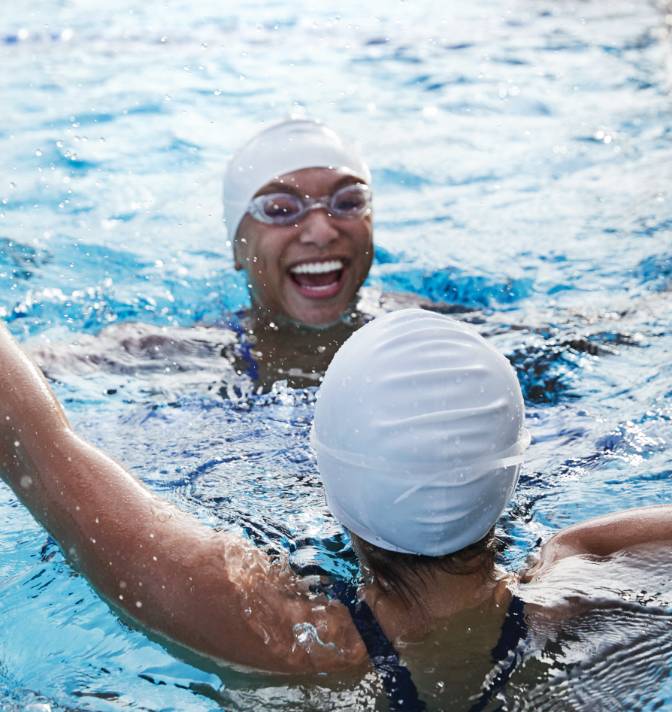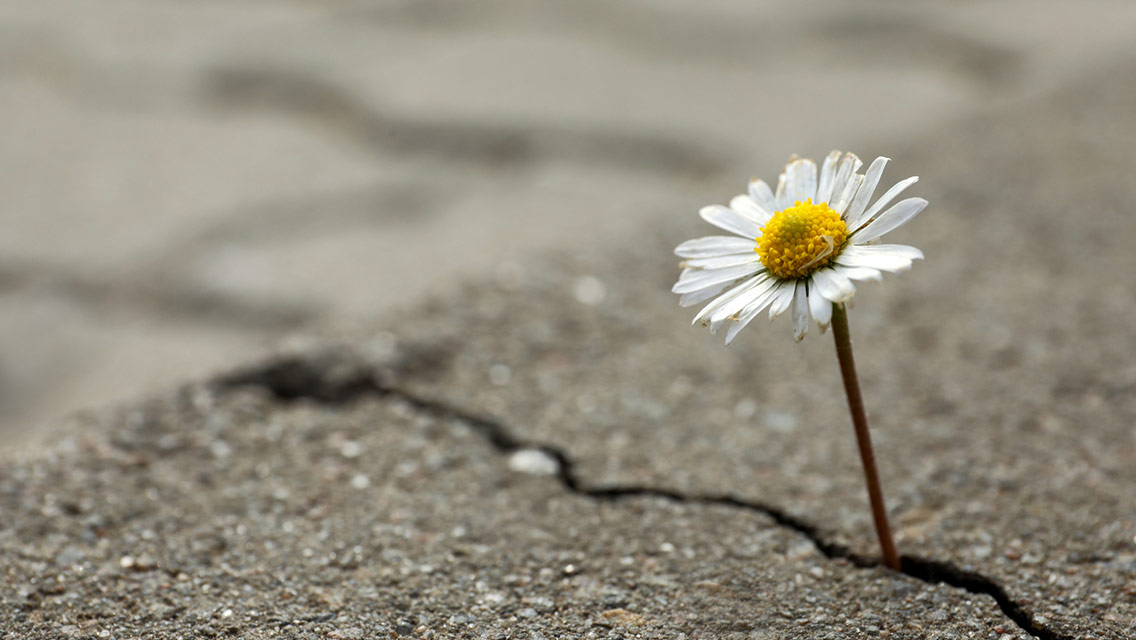When lifelong swimmer Mallory Weggemann was paralyzed from her abdomen down in early 2008, it seemed at first that she might never compete again. But Weggemann, 27, has found that her love for swimming is one of the few things left unchanged by her disability.
She now holds 34 American Records and 15 World Records in the Paralympic division, and touched audiences around the world with her memorable gold medal race at the 2012 London Paralympic Games.
We caught up with Weggemann just days before the U.S. Paralympic Swimming Trials to learn more about how her inspiring story is still unfolding as she trains for the 2016 Games in Rio de Janeiro.
Editor’s Note: Shortly after our interview in July, Mallory Weggemann was named to the 2016 U.S. Paralympic Swimming Team following a successful showing at trials in Charlotte. Weggemann will be contending in seven events.
Q&A
Experience Life | You’ve been a competitive swimmer since you were 7 years old. How has your relationship with swimming changed over the years?
Mallory Weggemann | For me, swimming has always been about family, and that’s what I love the most about it. I’m the youngest of three girls, and my two older sisters were competitive swimmers. That’s how I got into the sport — I was always going to the pool to watch them, and I wanted to be just like them.
I’ve grown up in the pool my entire life, so in that sense it’s a very freeing, meditative activity for me. It doesn’t matter what pool I’m in: 50 meters is 50 meters. It doesn’t change on you, and that makes it feel like a very safe place for me.
The swimming community in the state of Minnesota has supported me my whole life, and when I was paralyzed after high school, it was very easy for me to come back to it. The community really welcomed me with open arms.
My relationship with the sport has had its ebbs and flows. I’ve always loved it, but I think in the last eight years that love has become more meaningful. It’s one of the main things in my life that my paralysis didn’t change. When I came back to the water, it didn’t matter that I couldn’t kick — I could still use my body and move freely through the water without my wheelchair. The pool was the one place I could go and be completely free from my injury, and that was transformative for me.
EL | What was it like to get back to swimming after your injury?
MW | I was paralyzed in January 2008, less than a year after I graduated from high school. My injury was caused by an epidural injection that I was receiving for back pain, and it was supposed to be the third and final one. Obviously, it didn’t really go as planned.
Following my injury, I was in this Catch-22: I knew I needed to move forward, but I didn’t know how. I think everyone knows what it’s like to feel that way at 18 or 19 years old. You’re trying to figure out who you are as an adult outside of the family you were raised in. My injury heightened that sense of needing to find myself, my purpose, and my direction.
At first, my life was abruptly changed. Everything I’d known for 18 years was suddenly different — I had to relearn how to dress myself and how to brush my hair, all these little things I hadn’t thought twice about before.
In April 2008, my oldest sister was home from school reading the paper on a Saturday morning, and she saw an article about the Beijing Paralympic swimming trials at the University of Minnesota. At that point, none of us had even heard of the Paralympics. We didn’t know much about disability sports — everything was very, very new to us. We decided to go see the trials that night.
Seeing those athletes left me in a state of complete awe. I realized that there really is life after injury — my wheelchair didn’t have to define me. That was such a freeing realization, and I’m so lucky that it happened so quickly for me.
While we were in the stands, some parents overheard my sister and me talking, and they understood that I was still a swimmer. They brought me down to the pool deck after the finals were over and introduced me to some of the athletes. I met a gentleman there named Jim Anderson — I now know him as Jimbo. He coached TWIN, which is the USA swimming team that trains at the U of M. Jimbo gave me his card and told me to call him when I wanted to get back in the water.
Two days later, my dad took me over to the pool, and I got back in for the first time. Just two and a half months after my injury, I started this journey of getting my swimming career back, and the rest is kind of history.
Many people have told me that they don’t know if they’d be able to do what I’ve done. “I don’t know if I’d be that strong,” they say. “I don’t think I could do that.”
What’s so interesting about that is I think if you had asked me in, say, October of 2007 how I would have risen to this challenge, I would have said the same thing. I don’t think I could do that. I don’t think I’d have the strength to move on. I don’t think I could be that brave.
One thing I’ve learned from my injury is that we are all strong enough to handle adversity. We all have that power within us — we just don’t always realize that strength until we’re forced to tap into it.
EL | When did you realize that you could not only go back to swimming, but that you could compete?
MW | I swam for maybe 30 minutes that first day, which isn’t very long. It was tough: I obviously wasn’t moving as quickly as I once had. But I went back every day after that. About two weeks later, I did a full two-hour practice with the club team, and on Memorial Day weekend I swam in my first club meet.
I raced all 9-year-olds that day. Every single one of them beat me, and it didn’t even matter. It was fun to realize that I could race again — it wasn’t even about winning. I’d just been paralyzed, and now I was back to racing and doing what I loved.
Three weeks before the one-year anniversary of my injury, I moved to North Carolina to go to Gardner-Webb University. It’s a small, private D1 NCAA school, and I swam for the team there. I traveled with them, I swam at conference, and a few months after moving there, I had my first major U.S. Paralympic meet. That was when I made the U.S. National Team.
I think that was the moment that I realized this was real. At that point, I’d been dreaming of the London 2012 trials, and suddenly it felt like it was within my grasp.
EL | Right now, you’re in some pretty intensive training for the Paralympic Games in September. What’s your training schedule like, and what other daily choices are you making to help support it?
MW | Training these past two years for Rio has been very different than it was four years ago for London. Going into London, I was 22. Your body can do different things at that age than it can at 27. When you’re training for the Games and putting your body through all this intense effort, 27 isn’t necessarily old, but it’s older.
In March 2014, I had a very severe arm injury. It’s permanent nerve damage, unfortunately, and it took me out of the water for about five months. Honestly, that moment really challenged the notion of whether I’d be able to continue with my swimming career. We thought I might have to retire, and even when I decided to keep working, we weren’t sure I’d ever be the athlete I’d once been. That was a pretty dark time for me — almost as challenging as becoming paralyzed.
That’s when I started working with my trainers at Life Time. That community made it possible for me to make the push for Rio. When I got back in the water after my arm injury, I was swimming maybe 1,000 meters three days a week, which is not very much. I couldn’t lift and swim on the same days, because my body couldn’t tolerate it — I was severely out of shape from five months of inactivity.
Now, we’ve built up to training five days a week. I swim between 5,500 and 6,000 meters per day, which is about two hours. I’m also in the weight room three days a week. It’s pretty intensive right now, because we’ve finally gotten to the point where I can really push my body.
Recovery is such a key component for an athlete — making sure I get enough sleep, that my muscles rest enough before working the next day. From my elbow down on my left arm, I’ve lost about 75 percent function, and I’m paralyzed from about my belly button down. I joke that I’m only left with about one and a half limbs, so I really need to make sure I’m keeping them strong and healthy.
A lot of people think purely about the athletic training, the physical components of the weight room and the pool, but what you don’t see behind the scenes are these recovery sessions. I have a compression device and an electric stimulator, and I hook up to those daily. I’ve been working with my trainers on nutrition, figuring out how to best fuel my body for my time in the pool. And then there’s this psychological component of making sure I’m keeping my mind fresh. By the time it’s all said and done, my day is pretty packed. Everything is focused around getting prepared for practice today, recovering for practice tomorrow, making small changes so I can be better the day after that.
EL | So much of your training since your arm injury has been really focused on getting ready for Rio. What’s it like to spend so much time working toward a goal of that magnitude?
MW | Goal-setting is an interesting topic for a Paralympian, because we all train for four years for this really huge goal. But obviously, you have to set more than just one goal in four years — otherwise, you’d drive yourself crazy.
I believe that you have to set small goals that can serve as your baby steps, your little wins, your tiny successes. And sometimes they might be your tiny losses, because those help you learn, reevaluate, and grow. It’s easy to think that if you set a goal and don’t reach it that you’ve failed. But my mindset is that if I set a goal and don’t reach it, it’s an opportunity to learn.
You can’t be afraid to have full dreams and ambitions. If you’re never willing to put grand ideas out there, you’ll never really know what you’re capable of. Without being brave and bold about what you want, I think it’s easy to psychologically limit yourself, without even realizing it.
But goal-setting is also about the people you surround yourself with. When you have ambitions, you need people around you to help push you toward them. I think that’s the only way you can reach a goal: having a community that makes you want to be better, that encourages you and supports you.
Your community can be your shoulder to cry on, but they’ll also be there to give you a swift kick in the butt when you need it. And you have to make sure, too, that you’re giving that energy back. If you can focus on that holistic, symbiotic relationship — taking time to focus on you and on the people you care about — that propels you toward your passion.
Ultimately, the Games are my ambition, but they’re not the end goal. Life moves on afterward. After I won my gold in London, I took stock of that. It’s such a beautiful symbol, and it signifies an incredible event in my life, but it’s about so much more than the race. It’s about the journey I took to get to that point.
Learn more about Mallory Weggemann and her training at Life Time in the video below.
Photo credit: The Factory Agency





This Post Has 0 Comments